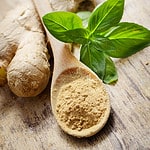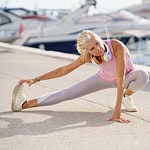Understanding Hydration
Hydration is key for healthiness. Especially when it comes to relieving knee pain. Keeping your joints in good shape and reducing inflammation depend on it.
Let’s figure out how hydration helps with knee pain, what the daily intake should be, and how to design a hydration plan.
What is hydration?
Hydration is the process of refilling the body’s water content. It’s essential for a healthy lifestyle, as it helps keep temperature levels steady and prevents dehydration. Not drinking enough fluids leads to tiredness, cramping, headaches and other health problems.
Hydration also helps with knee aches and pains. Replenishing lost fluids by activity or exercise moistens joints and reduces inflammation caused by injured tissue.
When exercising or doing activities that strain the knees, it’s important to stay hydrated by drinking fluids throughout the day. Drinking water before, during and after activities lubricates joints, decreases swelling and aids in recovery from workouts or activities that may cause pain. Plus, it leads to better performance when active.
It’s suggested we have 8 8-ounce glasses of water a day – even more when we do physical activities like exercising or running – to assure proper hydration levels and optimal knee relief. Everyone’s needs differ depending on location and habits like dieting or alcohol drinking; so it’s vital to know what each person needs and make a plan that suits them!
Benefits of staying hydrated
Staying hydrated is a must for athletes dealing with knee pain! It lubricates joints, reduces pain, and keeps muscles flexible. Hydration also helps flush toxins from the body and aids digestion and circulation.
Creating a hydration plan is essential. Steps to follow include:
- Drinking enough water – this depends on gender, weight and activity levels;
- Keeping track of water intake – carry a water bottle refilling it when needed;
- Limiting caffeine – this is a diuretic which leads to dehydration;
- Eating hydrating foods – oranges, watermelon, cucumber, and berries are a few;
- Monitoring urine consistency – pale yellow is good, dark yellow/orange is not;
- Using electrolyte drinks sparingly – only after intense physical activity or on hot days.
How much water should you drink?
Water intake is key for knee pain relief. But, it’s hard to know how much to drink. Everyone has their own needs and levels of activity that impact how much water they need. The recommended amount is 8 cups or 64 ounces per day. People who are more active need more.
Your water should come from both beverages and foods. Your body needs hydration and electrolytes to perform and be healthy. So, add electrolyte-rich drinks to your diet.
A good way to ensure you get the right amount of fluids is:
- Measure how much is in your containers so you can easily track your intake during the day.
- Drink 8 cups (2 liters) each day. Plus, 1-2 cups (250-500 ml) for every hour of physical activity or exercise.
- Drink cold water when possible. The International Journal found it’s easier for your body to absorb cold fluids faster. This helps with hydration and thirst satisfaction.
- Include high-electrolyte drinks like coconut water, sports drinks, and juice. This helps replace minerals lost during activity.
- Drink throughout the day. Don’t chug everything. Moderation is key – even beer counts.
Hydration Plan for Knee Pain Relief
Hydration is essential for recovery from knee pain. It can be the deciding factor between success or failure in your recovery. Therefore, it’s important to make a hydration plan to make sure your body has enough fluids.
Let’s look at the key aspects of a hydration plan for relief from knee pain:
Create a daily hydration plan
When attempting to manage knee pain, making a daily hydration plan is essential. The Joint National Committee on Prevention, Detection, Evaluation, and Treatment of High Blood Pressure suggests drinking six to eight glasses of water (1.2 liters) daily.
In addition to drinking water, having a balanced diet with vegetables and healthy fats like salmon, avocado, and olive oil will help. Eating magnesium-rich foods like legumes can reduce inflammation and ease knee pain. Other beneficial foods include wild caught salmon for its omega-3 content and turmeric for its antioxidant benefits.
When thinking about liquid consumption each day to treat knee pain, consider how much water you are drinking now. Start by drinking a couple glasses in the morning. This’ll kickstart your metabolism and help you stretch. Then, drink a set mid-morning before lunch. Drink one or two glasses before dinner so you can end your day hydrated and relax your muscles before bedtime.
You may need to adjust guidelines based on individual preferences or body type. Don’t forget to drink if you’re thirsty after lunch or dinner! Rearranging meals won’t make a difference if there isn’t enough hydration during them. Pay attention to what and how much is being consumed so knee pain can be managed properly.
Monitor your water intake
Hydration is key! It helps with thinking, focus, energy and regulating temperature. Plus, it relieves knee pain. Dehydration leads to dry cartilage in knees, causing more pain when we move or stand still. So monitor how much water you drink daily.
Age and activity level influence how much you need per day: Women: 9 cups, Men: 13+ cups. Consume 4 cups during each meal including breakfast. Pay attention to caffeine drinks too – they are diuretic and can cause dehydration.
Symptoms of dehydration: dark yellow urine, intense thirst, headaches/migraines. Adjust your hydration plan to prevent more joint issues and knee pain.
Track your progress
To create an effective hydration plan for knee pain relief, tracking your progress is key. Record daily water intake and the intensity of pain. This data can show if the plan is working or needs adjusting.
A decrease in pain with no complete relief might mean the strategy needs changing.
Also, lifestyle habits like
- not stretching before physical activity
- drinking alcohol or caffeine in excess
- not getting enough rest or sleep
could be triggering severe pain.
Tracking progress helps document successes and inform further steps. This saves time and energy to get desired relief.
Tips for Sticking to Your Hydration Plan
Hydrating is key for managing knee agony. Drinking the proper amount of water can reduce inflammation and oil the knee joint’s link tissues. But, creating and adhering to a hydration plan can be hard. Here are some ideas to make and stick to a hydration plan for knee pain alleviation:
- Set a daily goal for water consumption.
- Drink water at regular intervals throughout the day.
- Carry a water bottle with you at all times.
- Add flavor to your water with slices of lemon, lime, or cucumber.
- Replace sugary drinks with water.
- Eat water-rich fruits and vegetables.
- Track your water intake.
Drink water throughout the day
Water can help your body stay in shape. Drinking regularly can help you stay hydrated. This is especially important for athletes. It improves performance and helps with weight and blood pressure. Keep a water bottle with you throughout the day.
Fruits and vegetables are hydrating foods. Coffee, tea and other beverages count too. Adults should aim for 8 cups of fluids daily. Avoid too much sugar, caffeine and energy drinks. They can cause dehydration.
Carry a water bottle with you
Having a water bottle with you is a great way to stay hydrated. It’s a reminder to drink fluids, which can help reduce knee pain by giving joints more lubrication and cushioning. And it’s eco-friendly!
When picking a reusable bottle, think about how much liquid you’ll need and what the lid and shape should be. Detachable straws help avoid spills; insulated bottles keep drinks colder longer. Choose one that you won’t mind carrying around and make hydration a habit!
Set reminders to drink water
Setting reminders to drink water each day is a great way to stay on top of hydration and meet your daily water intake goals. Use a paper planner, digital calendar, or free hydration app. Constant reminders ensure you don’t forget and stay focused on hydration goals. Here’s how to get started:
- Make an appointment in your schedule for each drink break and mark off when you finish each cup of water.
- Choose times during the day to drink more water (e.g. before meals, coffee breaks, after waking up).
- Put reminders (e.g. post-it notes) in visible places like near light switches or next to frequently used objects.
- Set multiple alarms – vocal and visual – in mid-afternoon and evening if you haven’t had enough.
- Incorporate distinctive noises like chime bells mixed into music tracks so your body associates sounds with drinking water.
Other Ways to Relieve Knee Pain
Staying hydrated is key for reducing knee pain, but it’s not the only answer. There are numerous other techniques to give relief. Exercise, stretching, cold or heat therapy, strengthening exercises, and braces are all possible solutions. Let’s explore these methods and how they can help with knee pain:
- Exercise
- Stretching
- Cold or Heat Therapy
- Strengthening Exercises
- Braces
Exercise regularly
Exercise is a good way to ease pain and discomfort connected to knee troubles. Doing certain exercises can help make your muscles and tendons that hold your knee stronger and more flexible. Low-impact exercises like cycling, swimming, water aerobics, and walking can help those with knee pain.
Before you start an exercise routine, talk with your doctor or physical therapist. They can help you find the right intensity levels and stretching exercises. Wearing proper footwear when exercising can help reduce knee pain by minimizing strain on the joint.
Exercise can help people with mild osteoarthritis as well as those with more severe pain from ACL tears and meniscus damage.
Use a knee brace
Knee braces can offer relief from pain. They provide support, reduce friction, protect the area around the joint, and help with alignment. Different types of braces are available and you should choose one based on your condition.
The most common type is an off-the-shelf (OTS) model. It has plastic straps to keep it close, and neoprene back panels for warmth and circulation. Custom-made functional braces also exist and should be made by an orthotist for best results.
Knee sleeves provide compression, but don’t alter motion. Some have open kneecaps for breathability, and silicone lining to reduce friction. Knee straps apply pressure around the patellar tendon to reduce pain, at rest and activity levels. Unloader type braces redistribute weight away from painful areas, so you can move better and hurt less.
It’s important to discuss with a medical professional before selecting a brace. This will ensure you get the right advice tailored to your condition.
Take pain relievers
If home remedies don’t help, OTC pain relievers like ibuprofen or acetaminophen are an option. Follow package instructions to reduce joint soreness and swelling. Exceeding the recommended dose can be dangerous.
Prescription-strength anti-inflammatories like naproxen sodium are available for chronic knee pain or arthritis. Talk to a doctor before taking these medications. Too much can cause stomach upset, liver damage, high blood pressure and increased risk of heart attack or stroke.
Conclusion
Hydration is essential when managing knee pain. Good hydration can decrease inflammation and benefit joint health. Exercise and certain anti-inflammatory foods can help with knee pain. But, correct hydration is critical for alleviating knee pain and promoting joint health.
Let’s look at how to create a hydration plan for knee pain relief:
Summary of the importance of hydration
Water is vital to life and health. It carries nutrients and oxygen to cells, lubricates joints, cools body temperature, absorbs shock, and flushes toxins. Staying hydrated prevents knee pain and injury.
Drinking enough water helps in many ways. It can reduce muscle pain, inflammation, restore joint balance, and increase joint stability. Water aids digestion and metabolism, giving you more energy for knee strengthening exercises. It supports healing after injury or surgery, improving range of motion, reducing pain during activity, and decreasing stiffness after recovery.
For chronic inflammatory conditions such as osteoarthritis or gout, water reduces symptoms and increases joint mobility. More water means better cell health, quicker recovery after exercise or play, and long-term resilience.
Creating a hydration plan is an important part of healthy knees. Increase water intake gradually. Different factors affect individual needs, such as activity level, size/weight/gender, geographic location, climate, and weather. High performance athletes and those with chronic medical conditions need special considerations for proper hydration techniques. This could include frequent electrolyte consumption and longer recovery periods between high intensity activities, to maximize performance and avoid dizziness, inflammation, and dehydration.
Summary of other ways to relieve knee pain
Creating a hydration plan is good for knee pain relief. But there are more solutions!
- Exercise: Strengthening muscles around your knee helps with pain. Stretching and flexibility helps with recovery and preventing injury.
- Diet: Eating whole foods and reducing processed foods, like fast food, can reduce inflammation which can lead to knee pain. Taking supplements designed for joint issues can help.
- Rest: Resting or lying down can give short-term relief. Medication prescribed by your doctor may be necessary for long-term relief.
- Psychological Support: Seeing a psychologist or counselor can help identify underlying causes of physical symptoms. Meditation and mindful strategies can help reduce stress hormones which can make physical conditions harder to manage. Also, support from family and friends can help make positive lifestyle changes which reduce discomfort over time.
Frequently Asked Questions
Q1: What is a hydration plan?
A1: A hydration plan is a set of guidelines or instructions that outline when and how much water to drink in order to stay hydrated and healthy. It is especially important to follow a hydration plan if you have knee pain and need to keep your joints lubricated and functioning properly.
Q2: What are some tips for creating a hydration plan?
A2: Some tips for creating a hydration plan for knee pain relief include: drinking plenty of water during the day, avoiding caffeinated beverages, and drinking at least 8 glasses of water a day. It is also important to drink more water when engaging in physical activity, as this can help to avoid dehydration and reduce knee pain.
Q3: How do I know if I am drinking enough water?
A3: A good way to know if you are drinking enough water is to check the color of your urine. If it is light yellow or clear, then you are drinking enough water. If it is dark yellow or orange, then you may need to drink more water.





